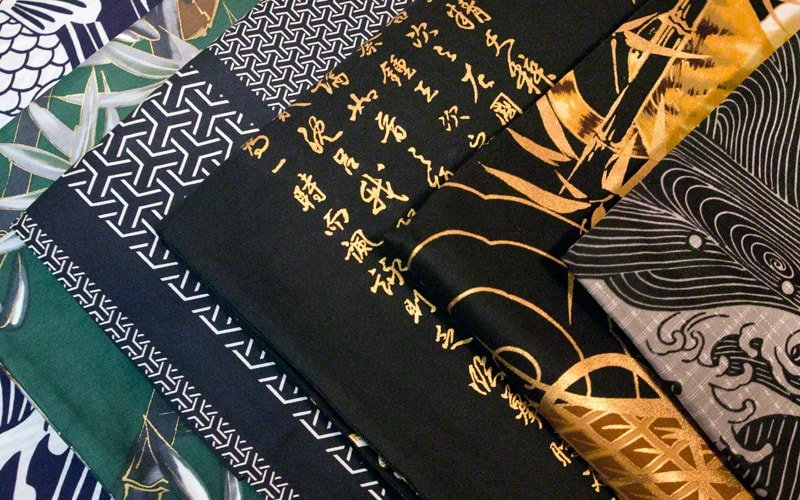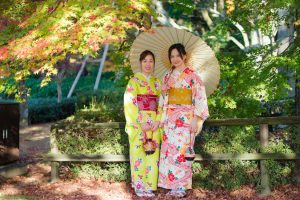Few garments capture the essence of tradition and sophistication as beautifully as a kimono. Particularly in weddings, the kimono transcends its role as simply clothing to become a statement of grace, history, and intention. Whether you’re a traditionalist or someone looking to blend elegance with modern trends, bridal kimono styling offers endless possibilities.
Here, we’ll explore the art of kimono bridal wear with tips for styling, modern trends, and timeless traditions to help you create a wedding day look that’s rich in meaning and unparalleled in beauty.
Tips for Styling Your Bridal Kimono
Auspicious Patterns for Good Luck
A wedding day is filled with wishes for a bright and joyful future, and your kimono can reflect this sentiment beautifully. When selecting your bridal kimono, opt for designs featuring auspicious patterns such as cranes, pine trees, or plum blossoms, which symbolize longevity, resilience, and prosperity.
Luxurious and Comfortable Fabrics
Comfort is as important as appearance on your big day. Choose lighter fabrics for your wedding kimono to combine elegance and ease of movement. Soft, cotton kimonos drape effortlessly, ensuring you’ll feel graceful from the ceremony to the reception.
Modern Accessories for a Contemporary Edge
Even within a traditional framework, there’s room to incorporate modern touches. Pair your kimono with a delicate headpiece, such as a subtle hairpin, or go bold with statement jewelry to complement your ensemble. These additions provide a hint of individuality while respecting the kimono’s heritage.
Flattering Hair and Neckline Styling
An updo is a classic choice when wearing a kimono, as it elegantly frames your face and highlights the neckline and back. Work with a stylist to create a sleek, polished look that balances tradition and modernity.
Color Coordination for a Cohesive Look
Your obi (belt) is a key element of your bridal kimono, both structurally and aesthetically. To create harmony, match the colors or details of your obi with your wedding theme. A subtle connection between your kimono and the décor or floral arrangements ties everything together beautifully.
Seasonally Inspired Choices
The seasons hold a special place in Japanese traditions. Choose colors and patterns that reflect the season of your wedding. Rich reds and golds evoke the warmth of autumn, while pastel hues align with the softer tones of spring.
Modern Trends in Bridal Kimono
While steeped in tradition, bridal kimono styling has embraced modern influences that enable brides to showcase contemporary flair.
- Lace and Sheer Details
Combining sheer panels or lace accents with traditional silk fabrics provides an ethereal, modern edge to a classic silhouette.
- Western Footwear Pairing
A bold choice among brides today is pairing a kimono with Western-style heels or sandals for a multicultural touch.
- Detachable Trains for Drama
Add a statement element to your ceremonial look with a detachable train that evokes the drama of Western bridal attire while complementing the kimono’s elegance.
- Shorter Kimonos for Reception Ease
Transitioning into a shorter kimono length for the reception embraces comfort while maintaining the traditional aesthetic.
- Non-Traditional Colors and Patterns
Break away from convention with bold hues like emerald green or patterns featuring abstract motifs, allowing your personality to shine in new and creative ways.
Honoring Timeless Traditions
Symbolism in Patterns and Colors
Every element of a traditional bridal kimono tells a story. From the cranes denoting eternal love to the use of red symbolizing happiness and vitality, understanding these symbols allows you to weave deep meaning into your outfit.
Mastering Etiquette and Movement
Wearing a bridal kimono is an art that extends beyond its physical form. Brides are encouraged to practice proper posture, controlled movements, and slower steps to maintain the elegance and respect the garment commands.
Layers and Components Explained
Traditional bridal kimonos are composed of layers that each play an essential role in the overall ensemble. This includes the inner robes, outer garments, and the intricately tied obi. Each layer is a testament to the craftsmanship and artistry deeply rooted in Japanese culture.
Historical Significance
Dating back centuries, the tradition of wearing kimonos at weddings connects brides to a heritage of artistry and family values. Each kimono serves as a cultural heirloom, passed down or thoughtfully created to carry the legacy of love and continuity.
Craftsmanship and Artistry
Bridal kimonos are works of art, often handmade and hand-painted by skilled artisans who pour their expertise into every detail. From the delicate embroidery to the intricate dye techniques, each kimono is a masterpiece, uniquely created for the bride who wears it.
Bridal Kimono for Every Bride
Whether you lean toward tradition or prefer a modern interpretation, wearing a bridal kimono is an opportunity to create a meaningful and visually captivating wedding day look.
Allow the artistry, history, and beauty of a kimono to transform your special day into something truly unforgettable. And if you’re unsure where to start, it’s always helpful to consult an expert who can guide you in selecting the perfect kimono or fusing traditional touches with modern trends.
Your wedding day deserves nothing but the finest craftsmanship and elegant styling, and a bridal kimono is a reflection of those qualities. Whether you’re cherishing timeless traditions or making bold, modern choices, the kimono connects you to a legacy of beauty and grace.






